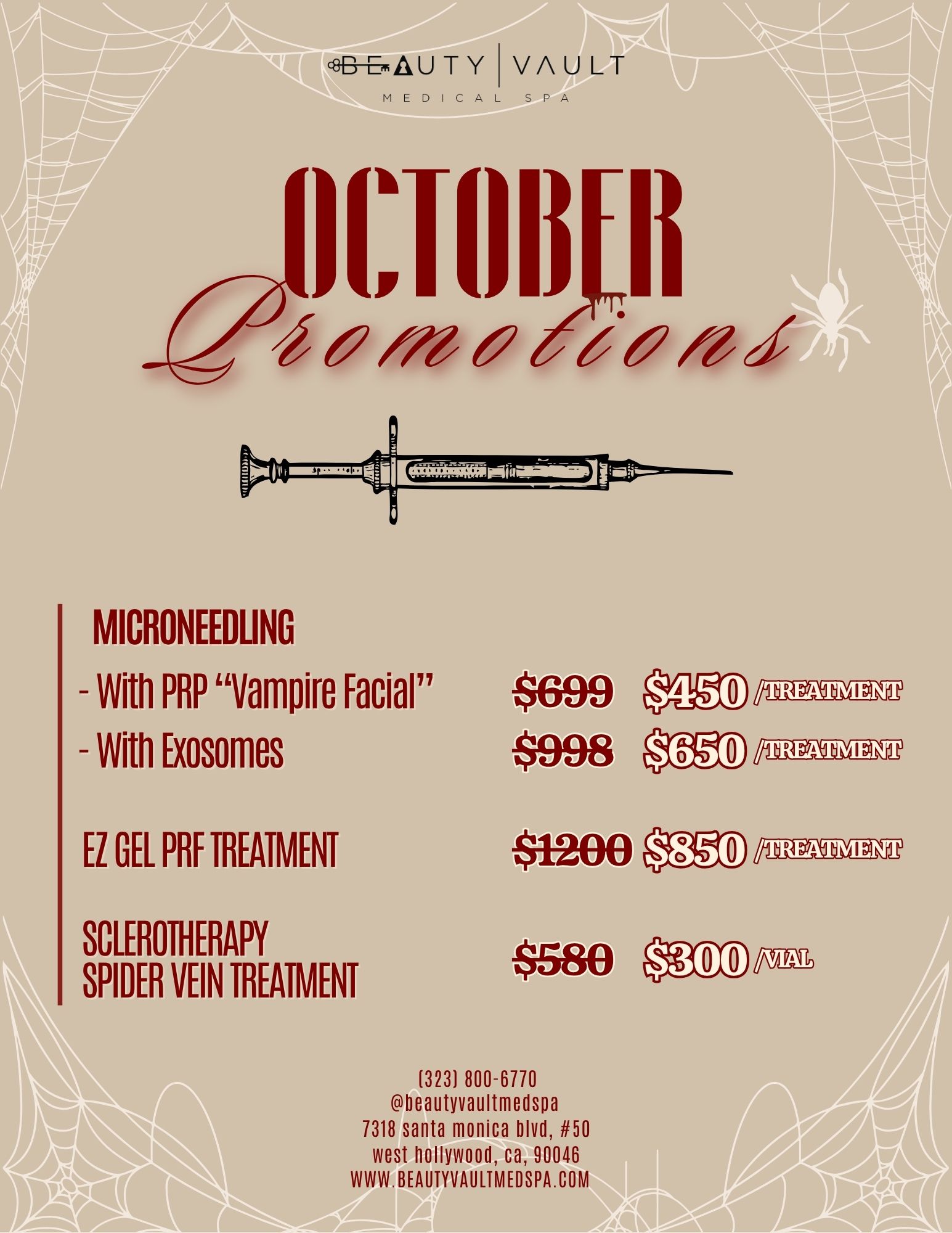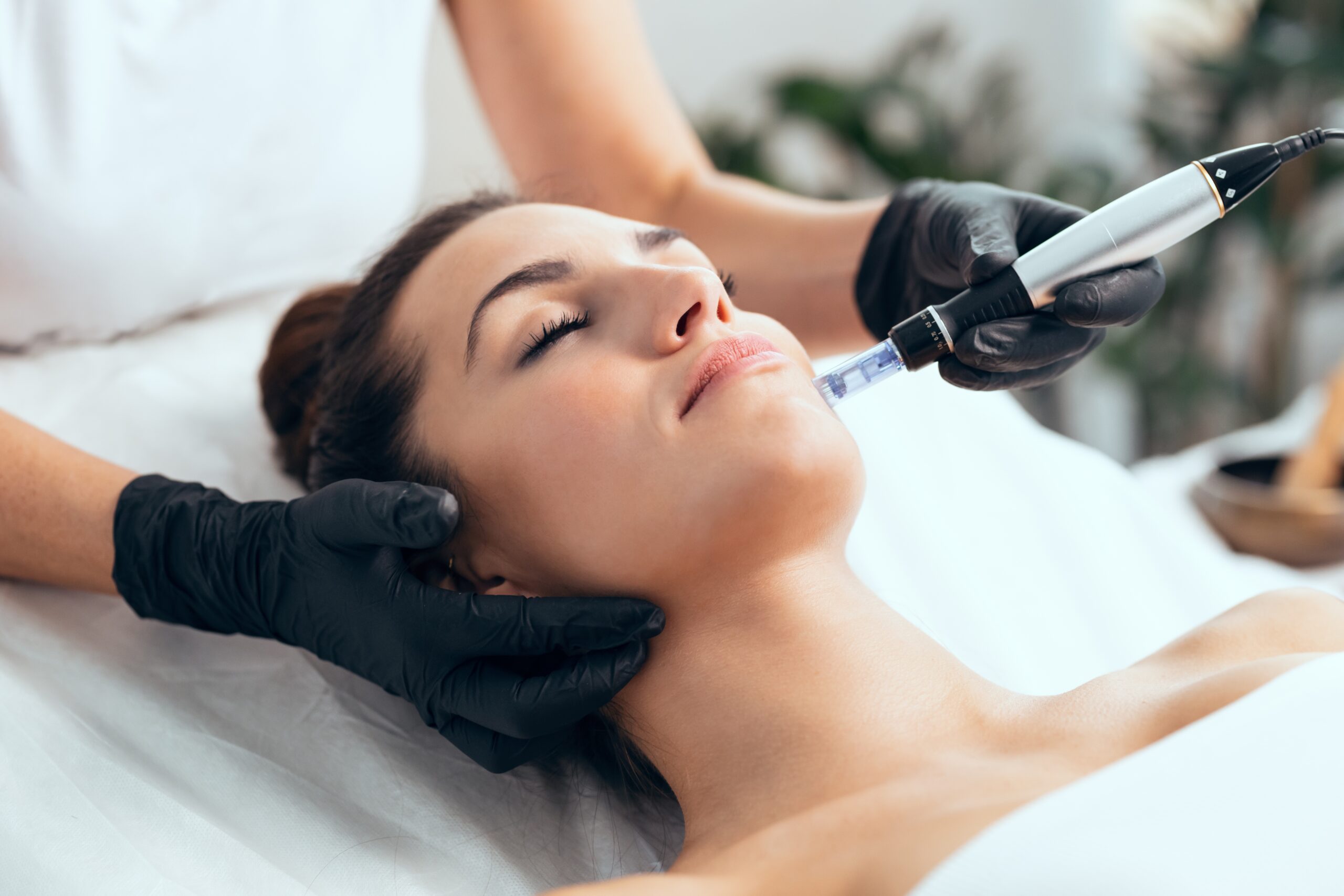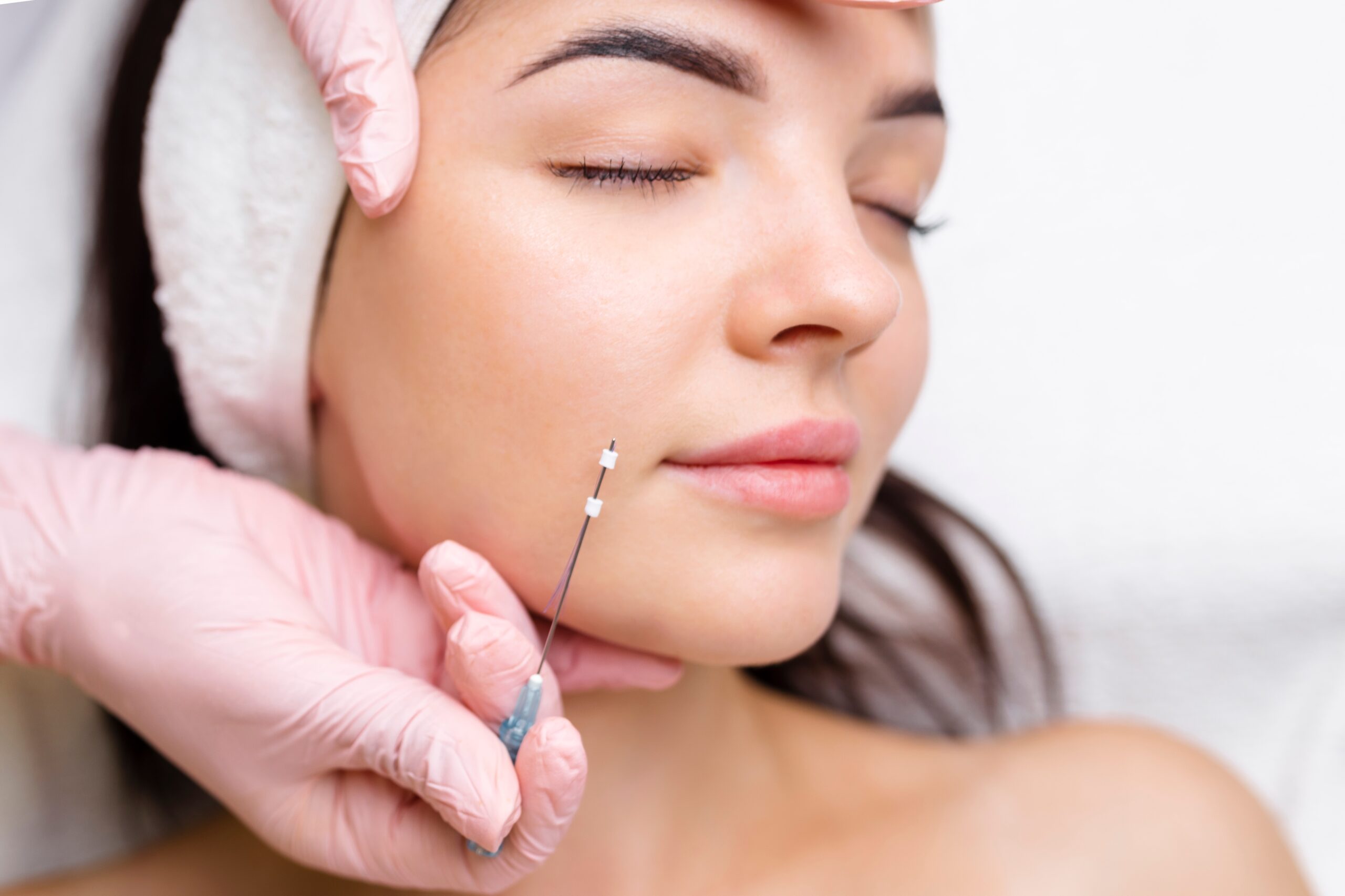Do you experience jaw pain and frequent headaches? Botox treatments for jaw pain could help relieve both conditions at once. This piece explains how Botox treatments can give you both cosmetic and healing benefits so that you can make informed choices about your care options.
Understanding the Link Between Migraines, TMJ, and Jaw Tension
The pain in your jaw and your headaches might seem unrelated, but the body’s anatomy shows why these pains often happen together. Let’s explore the biological connections to see how Botox might help with both conditions.
Shared Muscle Groups and Nerve Pathways
There’s a major nerve that sends sensory information about touch, pain, and temperature from your head and face to your brain, so pain in one area—like your jaw—can trigger pain in other places like your temples or behind your eyes. During a migraine, specific triggers can activate pain-sensitive nerve endings that send distress signals through this nerve, creating a chain reaction that causes headache pain that might spread to or from the jaw.
How Bruxism and TMJ Contribute to Headaches
Bruxism—repeated jaw muscle activity during sleep or while awake—plays a big role in this pain relationship. While it doesn’t always hurt by itself, bruxism can make headaches worse, especially when you have disorders in the jaw joint and/or surrounding muscles.
For example, your jaws can normally bite down with approximately 70 pounds of force per square inch. If you grind your teeth at night, however, this force can jump to around 700 pounds per square inch! This extra pressure overworks the muscles in your jaw, cheeks, and temples. The result? Throbbing headache pain and sometimes migraines.
When to Consider Botox for Headaches and Jaw Pain
You need to understand specific diagnostic criteria that doctors use to review headache and jaw pain conditions before deciding if Botox is right for you. Botox treatment doesn’t work for all headache types, and not every case of jaw discomfort qualifies for this intervention.
Chronic Migraine Diagnosis Criteria
Doctors must first confirm if you meet the clinical definition of chronic migraine before they can recommend Botox treatment. International guidelines define chronic migraine as headaches that occur on 15 or more days per month for more than three months. Migraine features must be present on at least eight of those days. The International Headache Society updated this definition in 2013 to include patients who experience medication overuse.
TMJ Disorder Symptoms and Diagnosis
Temporomandibular joint (TMJ) disorders show distinct symptoms that might make Botox a treatment option. Common signs include:
- Persistent jaw or facial pain and muscle tenderness
- Difficulty opening or closing your mouth, sometimes including jaw “locking”
- Clicking, popping, or grating sounds during jaw movement
- Headaches, migraines, or earaches associated with jaw movement
- Neck and shoulder pain
Healthcare providers diagnose TMJ by observing your jaw’s range of motion. They press on facial areas to identify discomfort and feel around the jaw joints while you open and close your mouth. In some cases, imaging tests such as X-rays, MRIs, or CT scans are necessary to examine joint structures.
What to Expect During a Botox Treatment Session
If a medical practitioner evaluates your symptoms and determines that you qualify for Botox treatment for pain relief, the next step is to complete the procedure. Mental preparation can reduce your anxiety and help you set realistic expectations about the treatment process and outcomes.
Pre-Treatment Consultation and Muscle Mapping
Your Beauty Vault provider will schedule a detailed consultation to review your medical history, current medications, and pain patterns. They can get a more accurate idea of your needs if you bring a headache diary that documents your episodes’ frequency, duration, and triggers.
Chronic migraine patients need identification of both the pain origin and its final location, as these might differ. TMJ cases require your Beauty Vault provider to get into jaw movement patterns and muscle tenderness to find the best injection sites. This targeted approach will give a personalized treatment plan rather than using a standard protocol.
Injection Process: Units, Sites, and Duration
Botox procedures are quick and usually take 10 to 30 minutes. Your Beauty Vault provider uses a very fine needle that feels like a pinprick to most patients. The treatment varies based on your condition. For example:
- Chronic migraines need about 31 to 39 injections in seven core areas, including the forehead, temples, back of the head, neck, and shoulders.
- TMJ-related pain requires targeted injections into the masseter and temporalis muscles, along with other facial muscles that control jaw movement.
Recovery Timeline and When Results Appear
Most patients return to their normal activities right after treatment, since Botox needs no downtime. Notwithstanding that, practitioners recommend you avoid:
- Touching or rubbing treated areas for at least six hours
- Heavy exercise for 24 hours after treatment
- Lying down for about four hours post-injection
Ice packs can help with any discomfort. You might experience temporary soreness at injection sites, and headache symptoms could briefly worsen before they get better.
Relief usually starts three to seven days after treatment, though some patients might wait up to two weeks. The complete benefits take time to develop, and maximum results sometimes show up after two to three treatment cycles. This gradual improvement happens as Botox blocks pain signals through nerve endings.
Each treatment typically provides relief for 10 to 12 weeks before effects start to fade. Treatment scheduling typically happens every three months for ongoing management. Results often improve with subsequent treatments as muscles adapt over time.
Comparing Medical and Cosmetic Outcomes
Patients often express surprise when they learn about how Botox treatments can help with both therapy and looks. This injectable does more than manage chronic pain—it can boost your facial appearance, too. Let’s explore this dual benefit.
Pain Relief vs. Facial Contouring Goals
Medical Botox treatments relax muscles to reduce pain, while cosmetic Botox treatments smooth out facial lines and wrinkles. Both treatments work the same way. They block nerve signals to muscles and stop contractions that lead to pain or wrinkles.
Dual Benefits in TMJ and Aesthetic Cases
TMJ disorder treatments with Botox show interesting results, especially when you have masseter injections. These shots help relax jaw muscles and ease pain. You might notice:
- Less force when grinding teeth
- Reduced TMJ swelling and inflammation
- Fewer headaches and less discomfort
The treatment can also slim down your lower face as the masseter muscle gets smaller. This happens naturally when the overworked muscle shrinks after treatment.
How Dosing and Technique Differ by Purpose
Medical and cosmetic Botox need different doses and techniques. Medical treatments usually need higher doses. TMJ treatments last longer—six to nine months compared to three or four months for cosmetic work.
Recovery feels different, too. TMJ patients need time to get used to biting with less force; cosmetic patients don’t have to deal with that.
Long-Term Considerations
You should know the practical details before getting Botox for jaw pain or migraines. This will help you plan better.
Repeat Treatments and Muscle Adaptation Over Time
Botox effects usually last 10 to 12 weeks before wearing off. You’ll need treatments every three months to manage symptoms effectively. The benefits might get better with more sessions as your muscles adapt over time.
Your response to treatment might change over the long term. Some patients can stop treatments without symptoms coming back, while others need regular maintenance forever. Your Beauty Vault provider can check how well you respond after several treatment cycles.
Consult with the Beauty Vault Team About Using Botox for Pain
Botox treatment gives patients an excellent way to deal with jaw discomfort and chronic headaches at the same time. Many people see good results, though everyone responds differently based on their condition. A chat with the Beauty Vault Team in West Hollywood about your symptoms can help you see if this treatment matches your wellness goals. To learn more, call the Beauty Vault team at (323) 800-6770 or fill out a contact form.
FAQs
Q1. How effective is Botox for treating migraines associated with jaw tension?
Botox can be highly effective for treating migraines associated with jaw tension. It works by weakening the muscles in the jaw and surrounding areas, which can help relieve tension and reduce the frequency, intensity, and duration of migraines. The full effects typically take three to four weeks to develop after treatment..
Q4. Can Botox provide a long-term solution for jaw pain?
While Botox can temporarily alleviate jaw pain associated with TMJ disorders, it’s not considered a long-term solution. Botox treatments typically last 10 to 12 weeks and need to be repeated for ongoing management. It’s important to note that Botox addresses the symptoms rather than the root cause of TMJ disorders.
Q5. What should I expect during a Botox treatment session for migraines or jaw pain?
During a Botox treatment session, which typically lasts 10 to 30 minutes, you’ll receive multiple injections in specific areas depending on your condition. For migraines, injections are usually administered across seven key areas, including the forehead, temples, and neck. For TMJ-related pain, injections target the masseter and temporalis muscles. Most patients describe the injections as feeling like pinpricks, and results usually appear within 3-7 days after treatment.








